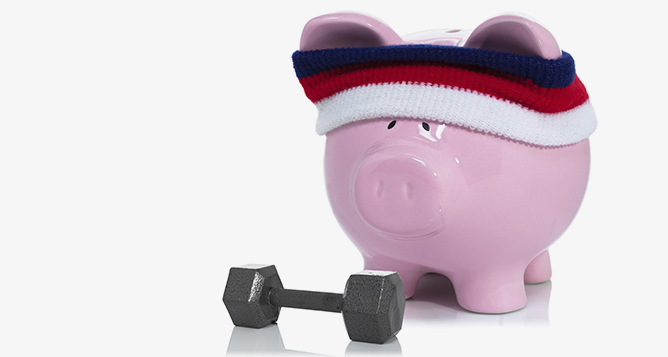How healthy is your debt?

Good debt involves borrowing to purchase an asset that should appreciate in value or provide an income stream. Bad debt, on the other hand, is associated with spending on things that will have little value in the future. Think holidays; clothes, eating out, groceries.
If you’ve gone through the pain of paying off a big credit card debt, you’ll know it can leave you reluctant to ever go into debt again.
But often borrowing can help us build funds for the future. So what does it take to move through that resistance and discover that debt doesn’t have to be a dirty word? For starters, it helps to recognise that there are different types of debt. Some drags you down, while others can give you lift-off. Financial planners like to label the two: good debt and bad debt.
Good debt involves borrowing to purchase an asset that should appreciate in value or provide an income stream. It might be a home; an investment property; shares; managed funds; a business. It’s generally secured against the asset so if you can’t meet the interest payments there is something to sell that will (hopefully) cover the outstanding debt. Apart from a mortgage, the interest cost is generally tax deductible.
Scott Heathwood, executive chairman of Wealthy and Wise Lifestyle Planning, says there can be a great upside to borrowing to invest, particularly in assets such as property, that are not subject to constant revaluations.
“Good debt can super-charge the return on your equity,” he says. “It can double or triple the return.”
“If someone has got $200,000 in a super fund if they turned that into a $600,000 property asset and borrowed $400,000 through the bank and say they got a 6 or 7 per cent return on that then they’d be getting 6 per cent on $600,000 as opposed to 6 per cent on $200,000.
Just how healthy is your debt?
“Assuming the tenant is paying the rent and the rent is paying the interest cost … then you’ve got 6 per cent on the bank’s money.
In effect, you’re getting $36,000 on $200,000 as opposed to $12,000 so it’s three times the return.”
Bad debt, on the other hand, is associated with spending on things that will have little value in the future. Think holidays; clothes, eating out, groceries.
It might also include an ‘asset’ that begins depreciating the minute you drive it out of the showroom or furniture that goes onto the nature strip before you’ve paid off your no-interest-for-24-months loan. It’s unsecured and is not tax deductible.
“Credit card debt is the bad one because it’s unsecured, it’s expensive and it’s at a very high rate,” says Heathwood.
So far, so straightforward but debt doesn’t always slot neatly into textbook categories. You can still find your so-called ‘good debt’ growing horns and sporting a pitchfork if you lose your job, experience a drop in income; a relationship breakdown or an accident.
A Jekyll to Hyde switch can also be caused by a dramatic change in the financial weather.
How secure are you?
Heathwood says one of the first things that should be considered is security of income.
“Are you secure in your job? Do you have mobility? One of the things that concerns me sometimes with people is they may have a good job but if they lose it they are going to be unemployable.”
Relationship stability can also be key. The quality of the asset is crucial.
“Don’t buy exotic investments. Don’t go into structured products,” says Heathwood.
“If you’re just an average person stick to plain vanilla stuff — average sustained growth over time is good.”
He advises people to buy quality property assets in growth corridors in capital cities and to look for areas earmarked for infrastructure developments or urban renewal.
“If you’re going to invest somewhere and the government is spending money on a hospital or a railway system – get in early – not after the event. If you get in during the planning stages you’ll make money.”
Similarly, he advises sticking with quality stocks, adding: “We wouldn’t gear anyone more than 50-50 because the market has got to drop 30-35 per cent or more before you’re in margin call.”
Borrowing capacity and your investment time horizon will impact whether borrowing to invest is a good idea. It’s not for someone on the verge of retirement. You also have to be able to withstand interest rate rises, ideally an extra 3 per cent in rates.
Wally David, a Melbourne financial planner and the author of thesmartmoney.com.au, thinks we have become too comfortable with carrying large amounts of debt and he advises clients to get rid of most – if not all – of their non-deductible home and car loans before borrowing to build wealth.
From a tax point of view it’s going to make most sense for someone on a reasonable income.
“If there will be a shortfall in terms of what you are paying in interest vs what you are earning in income the tax benefit is obviously more skewed if you are on a higher tax rate,” he says.
“There has also got to be money left over in your week-to-week expenditure to allow you room to service that extra commitment which if you’ve previously been making repayments on your home loan now you can redirect it elsewhere.”
Action Plan
To make the most of “good debt”:
- Ensure you have job and relationship stability
- Check you can withstand interest rate rises
- Stick to quality assets
- Check you have the excess cash to service any shortfall between the income from the asset and the borrowing costs
- Cover yourself against any loss in income through an accident or job loss
Article sourced from www.theage.com.au/money by Christine Long.